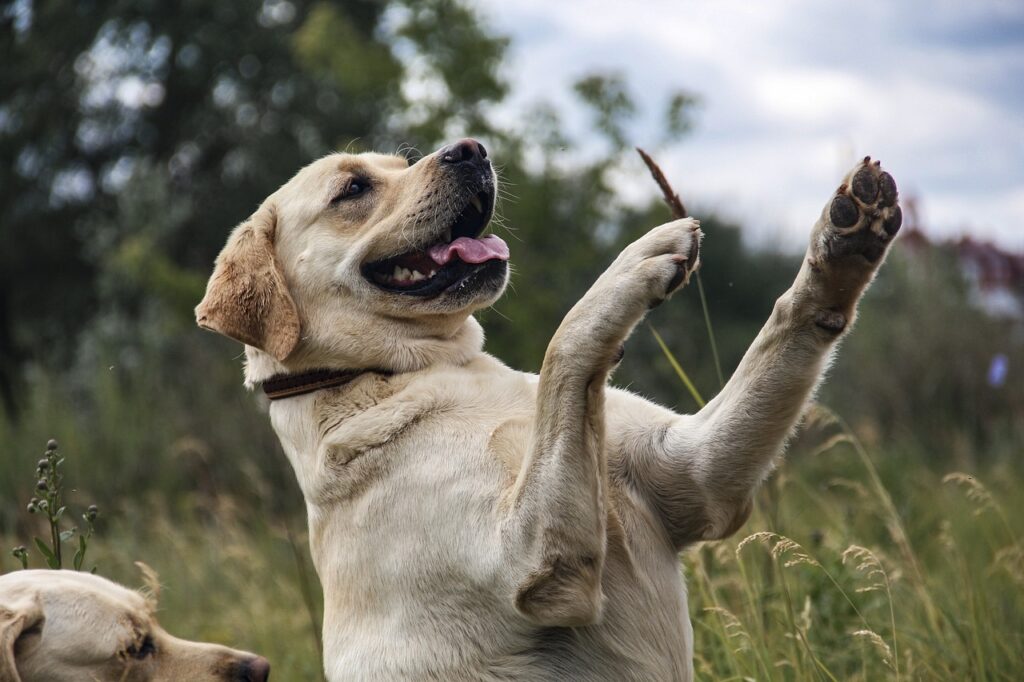The Labrador Retriever
The Labrador Retriever, sometimes colloquially referred to as the “Lab,” is arguably one of the most popular dog breeds in the world-and for good reason. With their friendly nature, intelligence, and versatility, Labs have won the hearts of millions as family pets, service dogs, and working companions.
Whether they are retrieving game for hunters, guiding people with disabilities, or lounging in the couches of families around the world, Labradors bring joy and loyalty to their work. The following blog will delve into the history, characteristics, temperament, and care requirements of this highly popular breed.
A Brief History of the Labrador Retriever
The Labrador Retriever originated in Newfoundland, Canada, in the early 19th century. They were first bred by fishermen to help retrieve fishing nets and catch fish that escaped from hooks. At that time, these proto-Labs were called the St. John’s Water Dog and were much smaller and leaner than the modern Lab.
The breed was later refined in England, where it was developed into the Labrador Retriever we know today. Labs were prized for their retrieving abilities, especially in hunting and fieldwork. Their friendly temperament and trainability quickly made them a favorite among families, and by the 20th century, they had become one of the most popular dog breeds in the world.
Physical Characteristics of the Labrador Retriever

The Labrador is a medium to large-sized breed with a sturdy, athletic build. Some of the important physical characteristics of the breed include:
- Size: Males normally are 22.5 to 24.5 inches at the shoulder, while females are a little smaller at 21.5 to 23.5 inches. They weigh normally between 55 and 80 pounds.
- Build: Labs have a strong-muscled build with a broad head, expressive eyes, and a thick, otter-like tail that aids them in the water.
- Coat: They possess a short, compact, and resistant double coat, of which the color comes in three recognized colors: black, yellow, and chocolate.
- Ears and Tail: They have medium-sized ears hanging close to the head; the tail is thick, tapering towards the end, described by some owners as a “rudder” during swimming.
The friendly expression with the wagging tail makes them instantly recognizable and universally loved.
Temperament and Personality
Comforting and gentle, with a friendly demeanor, Labradors are. Here’s why their temperament stands out:
- Friendly and Social: Very social, Labs enjoy being around people, kids, and other pets; they love going through human interactions, therefore love joining family activities.
- Intelligent and Trainable: Among the smartest breeds in the world, Labs easily learn and thus are very much obedient. Because of this, they are used in many areas: as service dogs, therapy dogs, and search-and-rescue dogs.
- Energetic and Playful: Being high-energy animals, Labs like to play and run around with much enthusiasm; they love to swim. Always ready for action, they take part in different outdoor activities such as hiking, fetch, and swimming.
- Loyal and Devoted: Labs are very attached to their families and loyal. They are protective yet not aggressive; thus, they prove to be very good family dogs.
- Gentle and Patient: Their calm and patient nature makes them great with children and other pets.
They have been described often as “nanny dogs” because of this nurturing demeanor.
Caring for a Labrador Retriever
Labradors are low-maintenance dogs, but they have particular needs in order to remain healthy and happy:
- Exercise: Labs are active dogs and require at least 1-2 hours of exercise daily. This can be done through walks, runs, playing, and swimming. Without proper exercise, they will get bored and be destructive.
- Diet: Labs are voracious eaters and may run the risk of obesity if overfed. They require a proper balance in their diet, comprising high-quality dog food appropriately portioned based on their size and activity level.
- Grooming: Its short coat is easy to maintain and needs only weekly brushing for removing the loose hair. Regular nail trimming and cleaning of ears and teeth are also called for.
- Training and Socialization: Labs need early socialization and firm training. They are very receptive to positive reinforcement and love to learn new tricks and commands.
- Health: Labs are generally healthy dogs, but they can be prone to certain health issues, such as hip and elbow dysplasia, obesity, and eye conditions like progressive retinal atrophy (PRA). Regular vet check-ups and a healthy lifestyle can help prevent or manage these problems.
Labradors as Working Dogs

Image by Ari_Bady from Pixabay
Labradors are incredibly versatile and excel in a variety of roles, including:
- Service Dogs: Labs are being widely used as guide dogs for the blind and service dogs for people with disabilities.
- Therapy Dogs: Gentle and affectionate, Labs are very good therapy dogs, offering comfort and solace to people in hospitals, schools, and nursing homes.
- Search and Rescue: Labs are often put to work in search-and-rescue missions because of their powerful sense of smell and strong work ethic.
- Hunting and Fieldwork: Labs are natural retrievers and are widely used as hunting companions, especially for waterfowl.
Is the Labrador Retriever Right for You?
Labradors are an excellent choice for families, singles, and active individuals. They are particularly well-suited for households with children and other pets. However, they do require a committed owner who can provide them with plenty of exercise, training, and attention. If you’re looking for a loyal, affectionate, and energetic companion, the Labrador Retriever might be the perfect fit for you.
Final Thoughts
The Labrador Retriever-a breed of dog with it all: intelligence, loyalty, and a whole lot of love. Whether they are hard at work or lavishing all their love as family pets, Labs enrich each and every scenario with positivity. With the right care and attention, a Labrador can indeed be a lifelong companion and an invaluable member of your family.
If you’re considering adding a Labrador to your life, be sure to research reputable breeders or consider adopting from a rescue organization. These incredible dogs deserve loving homes where they can thrive and continue to spread happiness wherever they go.





